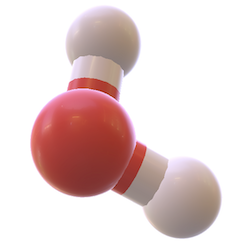Pathway: Biosynthesis of the N-glycan precursor (dolichol lipid-linked oligosaccharide, LLO) and transfer to a nascent protein
Reactions in pathway: Biosynthesis of the N-glycan precursor (dolichol lipid-linked oligosaccharide, LLO) and transfer to a nascent protein :
Biosynthesis of the N-glycan precursor (dolichol lipid-linked oligosaccharide, LLO) and transfer to a nascent protein
N-linked glycosylation commences with the 14-step synthesis of a dolichol lipid-linked oligosaccharide (LLO) consisting of 14 sugars (2 core GlcNAcs, 9 mannoses and 3 terminal GlcNAcs). This pathway is highly conserved in eukaryotes, and a closely related pathway is found in many eubacteria and Archaea. Mutations in the genes associated with N-glycan precursor synthesis lead to a diverse group of disorders collectively known as Congenital Disorders of Glycosylation (type I and II) (Sparks et al. 1993). The phenotypes of these disorders reflect the important role that N-glycosylation has during development, controlling the folding and the properties of proteins in the secretory pathway, and proteins that mediate cell-to-cell interactions or timing of development.
After translation, many newly formed proteins undergo further covalent modifications that alter their functional properties. Modifications associated with protein localization include the attachment of oligosaccharide moieties to membrane-bound and secreted proteins (N-linked and O-linked glycosylation), the attachment of lipid (RAB geranylgeranylation) or glycolipid moieties (GPI-anchored proteins) that anchor proteins to cellular membranes, and the vitamin K-dependent attachment of carboxyl groups to glutamate residues. Modifications associated with functions of specific proteins include gamma carboxylation of clotting factors, hypusine formation on eukaryotic translation initiation factor 5A, conversion of a cysteine residue to formylglycine (arylsulfatase activation), methylation of lysine and arginine residues on non-histone proteins (protein methylation), protein phosphorylation by secretory pathway kinases, and carboxyterminal modifications of tubulin involving the addition of polyglutamate chains.
Protein ubiquitination and deubiquitination play a major role in regulating protein stability and, together with SUMOylation and neddylation, can modulate protein function as well.
Metabolism of proteins, as annotated here, covers the full life cycle of a protein from its synthesis to its posttranslational modification and degradation, at various levels of specificity. Protein synthesis is accomplished through the process of Translation of an mRNA sequence into a polypeptide chain. Protein folding is achieved through the function of molecular chaperones which recognize and associate with proteins in their non-native state and facilitate their folding by stabilizing the conformation of productive folding intermediates (Young et al. 2004). Following translation, many newly formed proteins undergo Post-translational protein modification, essentially irreversible covalent modifications critical for their mature locations and functions (Knorre et al. 2009), including gamma carboxylation, synthesis of GPI-anchored proteins, asparagine N-linked glycosylation, O-glycosylation, SUMOylation, ubiquitination, deubiquitination, RAB geranylgeranylation, methylation, carboxyterminal post-translational modifications, neddylation, and phosphorylation. Peptide hormones are synthesized as parts of larger precursor proteins whose cleavage in the secretory system (endoplasmic reticulum, Golgi apparatus, secretory granules) is annotated in Peptide hormone metabolism. After secretion, peptide hormones are modified and degraded by extracellular proteases (Chertow, 1981 PMID:6117463). Protein repair enables the reversal of damage to some amino acid side chains caused by reactive oxygen species. Pulmonary surfactants are lipids and proteins that are secreted by the alveolar cells of the lung that decrease surface tension at the air/liquid interface within the alveoli to maintain the stability of pulmonary tissue (Agassandian and Mallampalli 2013). Nuclear regulation, transport, metabolism, reutilization, and degradation of surfactant are described in the Surfactant metabolism pathway. Amyloid fiber formation, the accumulation of mostly extracellular deposits of fibrillar proteins, is associated with tissue damage observed in numerous diseases including late phase heart failure (cardiomyopathy) and neurodegenerative diseases such as Alzheimer's, Parkinson's, and Huntington's.
